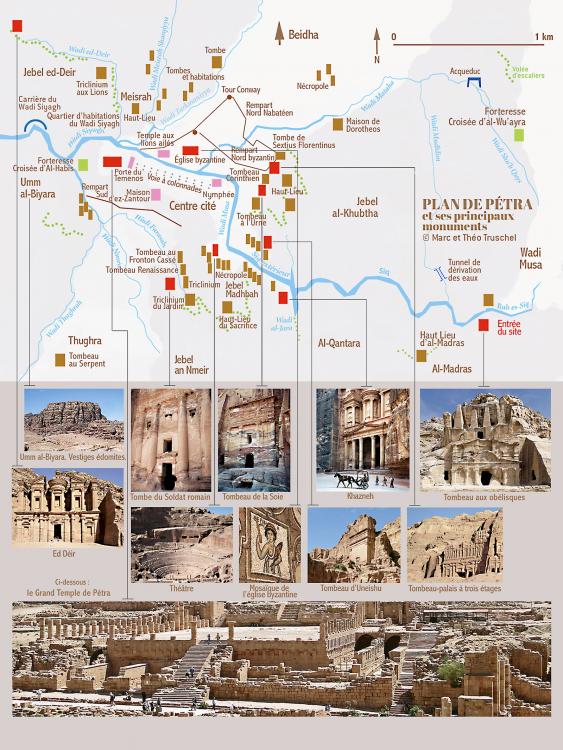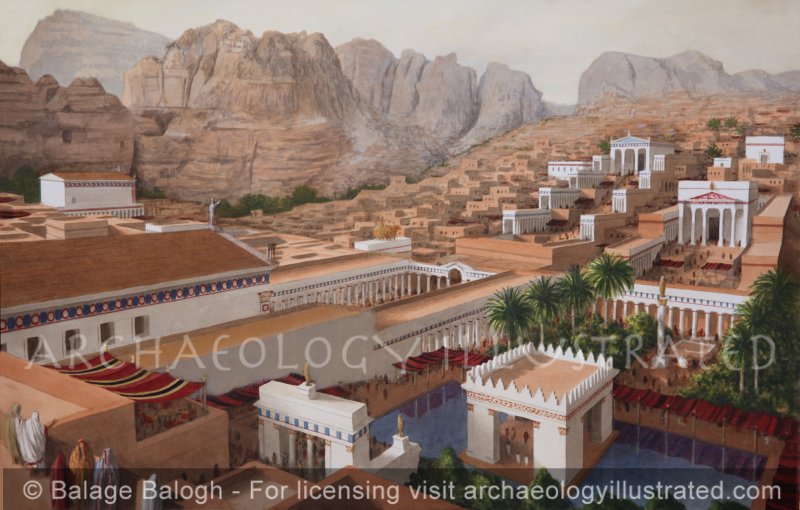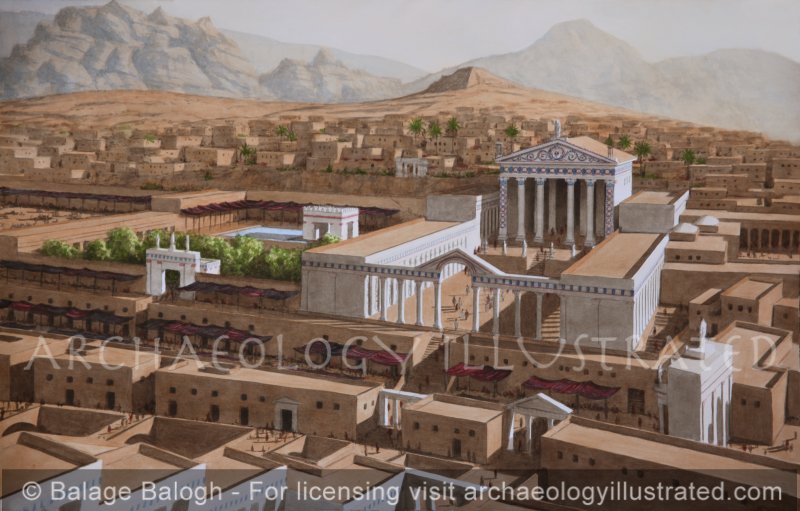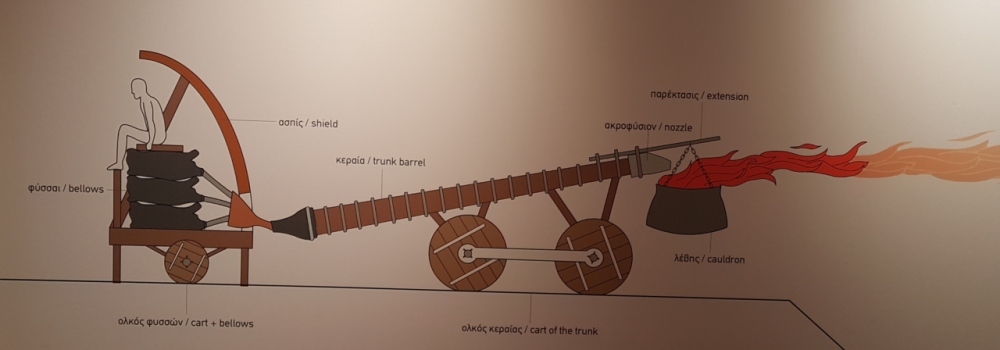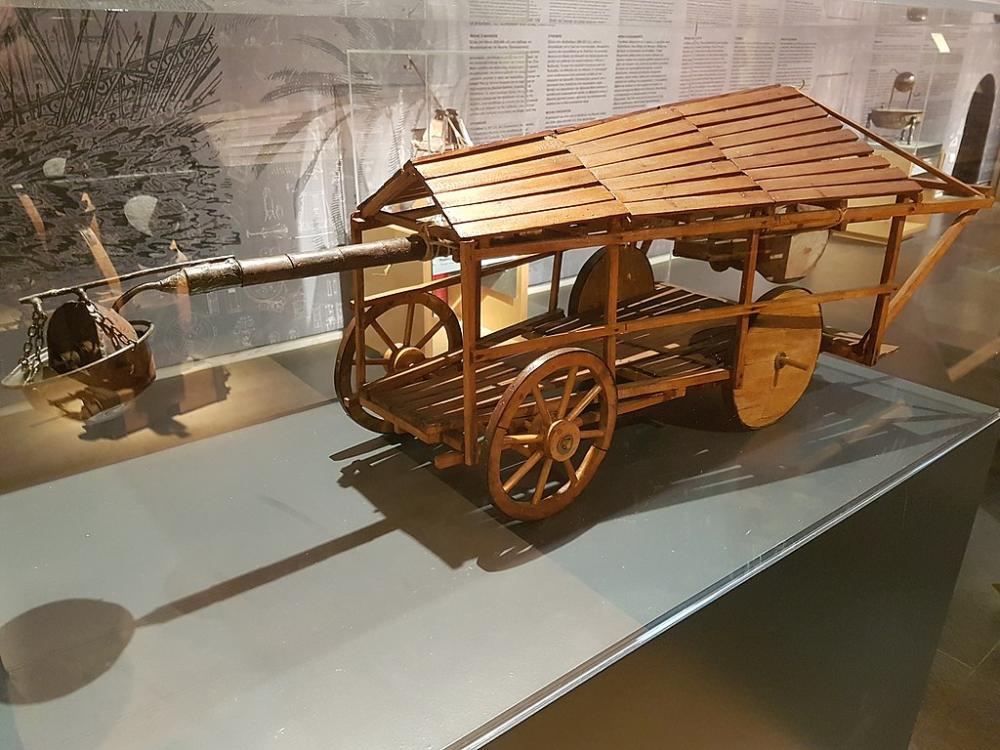-
Posts
2.418 -
Joined
-
Last visited
-
Days Won
84
Everything posted by Genava55
-
.thumb.jpg.b21ca1d0c15fb56b42c39b25a0a40815.jpg)
Classical Iranian Culture and Religion
Genava55 replied to Veridagorin's topic in Introductions & Off-Topic Discussion
Amélie Kuhrt's book is very useful but if you want something focusing on the society, I would suggest "The World of Achaemenid Persia", "A History of Zoroastrianism (Zoroastrianism under the Achaemenians)" and "Women in Ancient Persia, 559-331 BC". Check the table of contents of "The World of Achaemenid Persia" and see if it could interest you. -
Epilektoi means "chosen" or "selected", and it was used to designate elite troops. In Athens, it was plausibly a permanent elite force during the 4th century BC. City Guards is not a good equivalent for a translation.
-
.thumb.jpg.b21ca1d0c15fb56b42c39b25a0a40815.jpg)
Roman military standards (Aquila, Signum, Vexillum)
Genava55 replied to nifa's topic in Art Development
Scythians maybe, at least the Saka seem to use something similar, although maybe without the dragon/wolf head: https://en.wikipedia.org/wiki/Orlat_plaques Although the Dacians clearly should have them, in the future. -
.thumb.jpg.b21ca1d0c15fb56b42c39b25a0a40815.jpg)
Roman military standards (Aquila, Signum, Vexillum)
Genava55 replied to nifa's topic in Art Development
@wowgetoffyourcellphone maybe the Eagle standard can be made available when the Marian reforms tech is researched? -
.thumb.jpg.b21ca1d0c15fb56b42c39b25a0a40815.jpg)
Roman military standards (Aquila, Signum, Vexillum)
Genava55 replied to nifa's topic in Art Development
I take the opportunity to share this study on the military standards: https://books.ub.uni-heidelberg.de/propylaeum/catalog/book/1394 It is written in German. -
Care to add a description?
-
https://en.wikipedia.org/wiki/Flying_wedge
-
.thumb.jpg.b21ca1d0c15fb56b42c39b25a0a40815.jpg)
Just curious discussion: The dress of the Thespians
Genava55 replied to Phalanx's topic in General Discussion
Seems to have been a modern legend: https://web.archive.org/web/20160304023218/http://www.sparta.markoulakispublications.org.uk/index.php?id=133 -
Interesting. Why?
-
.thumb.jpg.b21ca1d0c15fb56b42c39b25a0a40815.jpg)
Archaeological potpourri
Genava55 replied to Gurken Khan's topic in Introductions & Off-Topic Discussion
-
Carthage deserves a rework, based on sources that are a little more researched than the usual superficial summaries. I don't really understand what the Numidians are doing in the civic center. These were not Carthaginian citizens, but allied troops - in other words, auxiliaries - who fought for Carthage under political agreements. Several Numidian peoples were direct clients of Carthage, so I can see why they're part of the standard roster. But not in the civic center. Slightly problematic are the Libyan lancers, who aren't necessarily at their best in the civic center. Carthage may have massively recruited Libyans into its armies, but the status of citizens for these troops was not systematic. In fact, Carthage mainly enlisted peasants from subjugated states. These peasants also worked in the fields of Carthaginian estates. Their status as peasants argues for integration into the civic center, but their status as foreign citizens argues for the opposite. I find that it also lacks mention of Libyphoenicians. They made up an important part of the Carthaginian troops and were Phoenician citizens in the other North African colonies. Libyphoenicians were known for their cavalry. In this case they could be recruited in the civic center.
-
.thumb.jpg.b21ca1d0c15fb56b42c39b25a0a40815.jpg)
Possible Mod Idea: Nabataeans/Lihyanites
Genava55 replied to Atenmeses52's topic in Rise of the East
-
.thumb.jpg.b21ca1d0c15fb56b42c39b25a0a40815.jpg)
A27: Extreme stuttering and OOS on rejoin
Genava55 replied to Seleucids's topic in Game Development & Technical Discussion
What is "full hash" in this context? The control of all values in the simulation? -
Warring states China would be nice too.
-
For the moment, they are the only representatives of these peoples. But potentially, we could have several representatives of certain civilizations. I am thinking in particular of the Romans, the Persians and the Chinese.
-
Yeah it's lame. Although it is easy to see and identify. Is this a feature that is existing but not used, or would we have to implement it in javascript ? Age of Mythology is in a simpler situation, the game is less realistic. We couldn't have such spectacular changes. But it would still be interesting.
-
Thebes and the Boeotian League, from Britannica: Boeotia and Boeotian Confederacy, free article on the Oxford Classical Dictionary: Other sources on their history: Boeotia, on Livius: https://www.livius.org/articles/place/boeotia/ Thebes and Boeotia in the Fourth Century B.C. by S. C. Bakhuizen, on JSTOR : https://www.jstor.org/stable/1192571 Subdivisions of the Boeotian Confederacy after 379 BC by J. Rzepka, on academia: https://www.academia.edu/download/61549003/Rzepka_Subdivisions_of_Boeotian_Confederacy.pdf The military policy of the Hellenistic Boiotian League by Ruben Post, on McGill University: https://escholarship.mcgill.ca/concern/theses/z316q5029 Thebes, the Boeotian League, and central Greece: political and military development and interaction in the fourth century BC by M.S. Furman, on St Andrews university: https://research-repository.st-andrews.ac.uk/handle/10023/12254 A history of Boeotia by R.J. Buck, a 220 pages book. The flamethrower of the Boeotians (5th c. B.C.) It was the first flamethrower in history and was first used by the Boeotians in the Peloponnesian War for the burning of the Dilion/Delium walls. It consisted of a scooped out iron-bound beam (ripped at length and reconnected) that had a bellow at the user’s end and a cauldron hung from chains at the other end. A bent pipe from the airtight orifice of the beam went down into the cauldron which contained lit coal, sulphur and pitch (tar). With the operation of the bellow, enormous flames were created that burned the wooden walls and removed their defenders. Later it was used for the offence of stone fortifications causing cracks in the stones because of the high temperature and the parallel infusion of vinegar, urine or other erosive substances in them. Thucydides, 4, 100: [1] The Boeotians presently sent for darters and slingers from [the towns on] the Melian gulf; and with these, and with two thousand men of arms of Corinth, and with the Peloponnesian garrison that was put out of Nisaea, and with the Megareans, all which arrived after the battle, they marched forthwith to Delium and assaulted the wall. And when they had attempted the same many other ways, at length they brought to it an engine, wherewith they also took it, made in this manner: [2] Having slit in two a great mast, they made hollow both the sides, and curiously set them together again in the form of a pipe. At the end of it in chains they hung a cauldron; and into the cauldron from the end of the mast they conveyed a snout of iron, having with iron also armed a great part of the rest of the wood. [3] They carried it to the wall, being far off, in carts, to that part where it was most made up with the matter of the vineyard and with wood. [4] And when it was to, they applied a pair of great bellows to the end next themselves, and blew. The blast, passing narrowly through into the cauldron, in which were coals of fire, brimstone, and pitch, raised an exceeding great flame, and set the wall on fire, so that no man being able to stand any longer on it, but abandoning the same and betaking themselves to flight, the wall was by that means taken. [5] Of the defendants, some were slain and two hundred taken prisoners; the rest of the number recovered their galleys and got home. More details: https://en.wikipedia.org/wiki/Battle_of_Delium https://commons.wikimedia.org/wiki/File:Boeotian_flame_thrower,_5th_century_BC,_Greece_(model).jpg https://commons.wikimedia.org/wiki/File:Boeotian_Flamethrower.png The Boeotian League is also known to have implemented military reform during the Hellenistic period. One of the source supporting this is the Great Stele of Thespiai, from which there are mentions of peltophorai (phalangites), an Agema (elite troops unit inspired from the Macedonian army), epilektoi (elite troops, either hoplite like or peltast like), pharetritai (archers), sphendonatai (slingers). In addition we need to add thyreaphoroi/thureophoroi and traditional hoplitai who are mentioned in other sources. It is also very important to highlight how the Boeotian League and Thebes implemented a lot of training for their troops, from their confrontation with Sparta which also inspired them and their imitation of Athens which developed the Ephebeia. The institutions of Ephebeia and Gymnastikós (gymnastics) were promoted, amplified and strengthened. Xenophon tells us that “all Boiotians exercised under arms” and Plutarch that the Boiotians became famous for “the attention they paid to exercise”. Diodorus also said, when Alexander the Great’s Makedonian troops attacked the Thebans during their revolt in 335, they were still “superior in bodily strength on account of their constant training in the gymnasium”. Boiotians seem to have been more successful than Athens in making the Ephebeia mandatory. Not only do epheboi and neaniskoi train to fight in formation with a shield, they also train with a bow and javelin and in skirmishing techniques. The young men were assessed during a festival called Pamboiotia, which enabled the troops to demonstrate their individual and collective skills.
-
.thumb.jpg.b21ca1d0c15fb56b42c39b25a0a40815.jpg)
Archaeological potpourri
Genava55 replied to Gurken Khan's topic in Introductions & Off-Topic Discussion
Awesome documentary about the Etruscans, check for subtitles and dubbed versions on Arte's website: https://www.arte.tv/fr/videos/101362-000-A/les-etrusques-une-civilisation-mysterieuse-de-mediterranee/ -
https://www.youtube.com/@Alexus50105/shorts
-
Another name plausible is Teutones. The name the Germans gave themselves was probably something like this. *þeudō in proto-germanic would mean 'people' and its derivations as *þeudiskaz 'from the people' and *ϸeudanōz 'those from the people' would be close to the word Teutones. In Proto-Indo-European, *teutonōs would mean "one from the people". Deutsch derives from this. https://en.m.wiktionary.org/wiki/deutsch
-
Caesar said the Gauls called themselves Celts. The Celts was the first name reported in the literature, as Keltoi by the Greeks (Herodotus, Hecateus of Miletus, Aristotle). Only later the name Gauls (Galli in Latin and Galatai in Greek) have been popularized. But the Gauls called themselves Celts. We also know a few tribes in Iberia used the name Celtici. The Britons probably not. In fact all the so-called Celtic people of the British Isles and Ireland, never have been called Celts and never have called themselves Celts in their literature. It is a much later invention when scholars realized the links between the languages (Gaelic, Welsh, Gaulish etc.). And also the mention of druids in both sides. The modern use of the word Celtic is different from the meaning it had during the ancient times. The same for German and Germanic. Numerous tribes have been called Germanic, but not all. For example the Goths never have been called Germans or Germanic. We know they spoke a Germanic language, but it is a modern view. Not the view they had in the past. For the Romans, Gauls and Germans are mostly equivalent. The labels are used for a large contiguous population divided in different tribes but occuping approximately the same geographical region. Every outsider from a geographical point of view, like the Britons and the Goths, were not included in the groupings. In the first iterations of 0 A.D., they were grouped in a single Greek civ. The only reason they are not, is for the gameplay. There is enough material among Greek city-states and Hellenic kingdoms to make several civs with enough diversity. But the Iberian civ for example is a extreme case of mixing in 0 A.D., like a patch-work of several different cultures. Cimbri are documented, their wandering happened at least between 113-101 BC. Although there is not that much info on them, they are a known people. They are not the first Germanic population appearing in the historical records, this would be the Bastarnae/Skiri.
-
Germans would be the most consistent with the other civs.
-
The word "Germani" is first popularized by Caesar, he used it to group a large population under one label and he built a narrative with it. There is a debate among scholars to know if Caesar was really the original source, maybe Posidonius of Apameia was the actual original transmitter of the word. But there is no consensus. Furthermore, there is a plausible hypothesis where Posidonius transmitted the named "Germani" to specifically speak about a tribe, not a large group. Tacitus mentioned that the name was originally applied to the Tungri only, then it has been generalized to others. Maybe Tacitus was relying on Posidonius because Caesar doesn't mention the Tungri. Caesar mentions the Aduatuci, the Condrusi, the Eburones, the Caeraesi and the Paemani as being commonly named Germans. Which is interesting because the Tungri could be another name of the Aduatuci. Finally there is something interesting in relation to the Cimbri here: The Aduatuci are a remnant of the Cimbri and Teutones who tried to invade the Belgians and failed. This is explained by Caesar. So the descendants of the Cimbri and Teutones could have been called Germans a few decades after their wandering. Thus, the Romans did call a large population Germans. German is not a label the tribes used to call themselves, but so do is the name Gaul. The concern with the name Germans and its correspondence with present-day Germans dates back to the Second World War and the Nazis' use of the Germanic theme as an ideological justification. But at no point is anyone going to make the same criticism of the use of the name Greek for the ancient populations of Greece when the Greeks of today bear the same name. The same goes for the Egyptians, the Chinese, the Belgians etc. I don't see why today's Germans should have exclusive use of this name. What's more, the problem only exists with English, and the world does not revolve around Anglo-Saxon countries alone. ‘Deutsch’ in German. ‘Allemands’ in French. ‘Tedeschi’ in Italian. ‘Alemán’ in Spanish. For me, the only problem with the Cimbri is that they come into conflict with a future faction of the Germans and that they're a single, relatively unknown people. The concept seems interesting, although I haven't tried the faction out yet. If we rename the Cimbri as Germans, it is fine for me. Although it is a bit sad to reduce the Germans to a single tribe.




